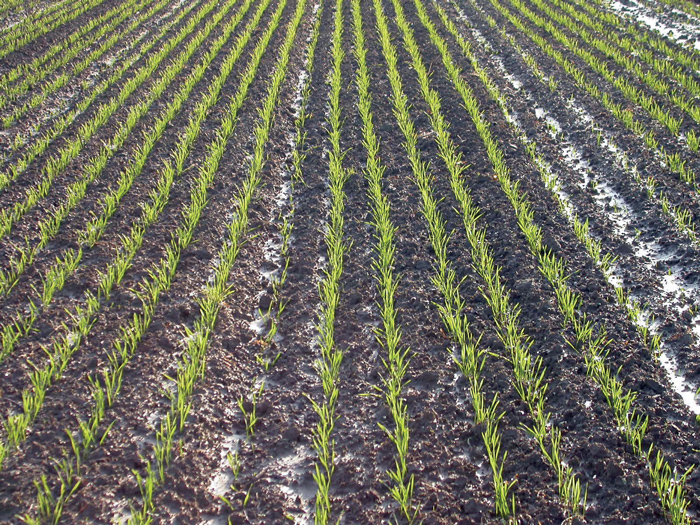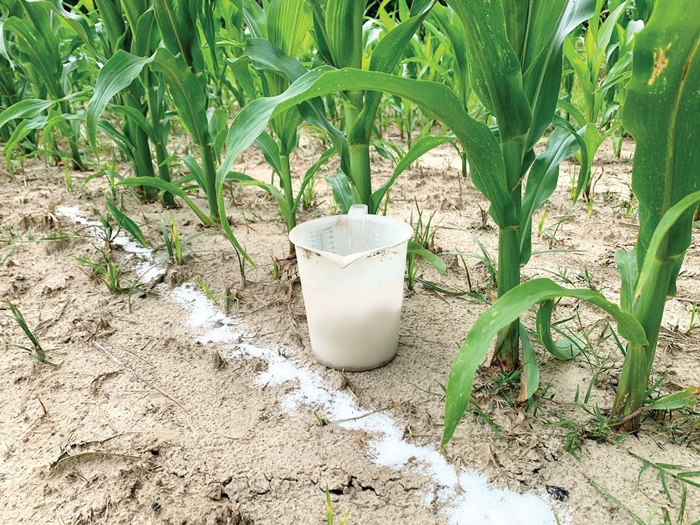November 2021
| PIETMAN BOTHA, INDEPENDENT AGRI- CULTURAL CONSULTANT |
 |
The year is speeding to an end and producers must make sure that everything is done to maximise their crop yield. It is important to manage the crop according to the first production plan – especially the fertilisation and chemical programmes.
These plans must constantly be evaluated. If changes in the programme is necessary, it must be done and now is the time to do it. To evaluate the fertilisation programme it is important to understand how much and when the crop requires the fertilisers.
GROWTH STAGES
In maize production there are important growth stages that must be kept in mind.
The theoretical yield is initiated during the V5 stage. If any form of nutrient shortages is experienced now is the time to correct it. The application of fertiliser according to leaf analyses will help to determine what is required.
During planting the correct fertiliser composition is important and will have an effect on the yield. The plant grows faster during the following stage with new leaves appearing around every third day. Obviously the need for moisture and plant nutrients increases in this stage.
TIME FOR TOP-DRESSING
Maize
The V6 up to the V8 stage is the designated time for a nitrogen top-dressing. All nutrient deficiencies must now also be eliminated, so that the capture of the final harvest potential – which is determined in the twelve-leaf stage – is not adversely affected.
In some cases it will make economic sense to increase the top-dressing. Where an above average rainfall is expected, it makes sense to apply more fertiliser. In the case of a drought year the top-dressing can be cut back but remember that the yield will then be lower. Contact your fertiliser representative to help with the decision.


Although the maize plant depends largely on nature to grow, other factors like cultivar choice, fertiliser, irrigation and pest control all contribute to maximise the yield.
Sunflower
In sunflower, fertiliser also plays an important role to maximise the yield. It is important to apply the necessary fertiliser with planting. The application of extra nitrogen and potassium can improve the yield. The expected yield and the soil analyses are needed to determine the extra fertiliser required. Although the plant removes relatively low kilograms of potassium and phosphate, it needs much more than is subtracted. Therefore it makes sense to apply additional fertilisers. The correct time to apply extra fertiliser is when the sunflower is knee high and before the sunflower canopy has formed.
Sunflower is very sensitive to boron and molybdenum deficiencies and if these trace elements are not supplemented, deficiencies can have a significant effect on yields. It is important to apply these elements before the sunflower has reached knee height.
Take note
WEED AND PEST CONTROL
Weed and pest control is important in all crops. Maize and sunflower yields are reduced extremely by weed competition in the crops’ young stage. It is important to apply the correct herbicide with planting.
In the later stages it is important to apply the second herbicide application to keep the crops weed free. With the second herbicide application it is important to read the labels and to apply the herbicide according to the recommendations. Make sure that the different types of herbicides applied can be sprayed together. Producers must make sure that the correct nozzles are used to apply the herbicides. Contact your chemical representative to make sure your plan can be executed.
It is also very important to make sure that the sprayers are calibrated correctly. Producers must compare each field’s application with the planned and calculated application.
When the crops are sprayed, farmers must also be on the lookout for any pests in the crops. In the maize fields it will be wise to apply some pesticide to control the bollworm and maize stalk borer worms if a conventional or Roundup ready cultivar is planted. If a BT cultivar is planted it is not necessary to manage the bollworm and maize stalk borer worms. Also look out for maize leafhoppers and maize aphids because they feed on the sap of the maize plants and transfer leave diseases.
CONTROL OF LEAF DISEASES
The control of leaf diseases in maize is very important. Be on the lookout for grey leaf spot, eyespot, common rust, northern corn blight and other diseases. These leaf diseases can reduce yields dramatically. Up to 50% of the yield can be lost due to these diseases.
In sunflowers it is also important to manage bollworms. The plants are at their most sensitive in the early stages of head formation. An infestation at this stage may result in deformed heads and poor seed set. Sometimes no head is formed at all.
After the flowering stage plants are less sensitive and damage is limited to eaten kernels in the head. Although bollworms may also attack the top leaves, damage is seldom serious, except when the infestation is particularly severe.
The main sunflower diseases are Sclerotinia sclerotiorum, rust, root rot, leaf spot, charcoal rot, white blister, head rot and stem rot. Contact your chemical representatives for advice on which chemicals to use as well as the right time to spray.
Publication: November 2021
Section: Pula/Imvula